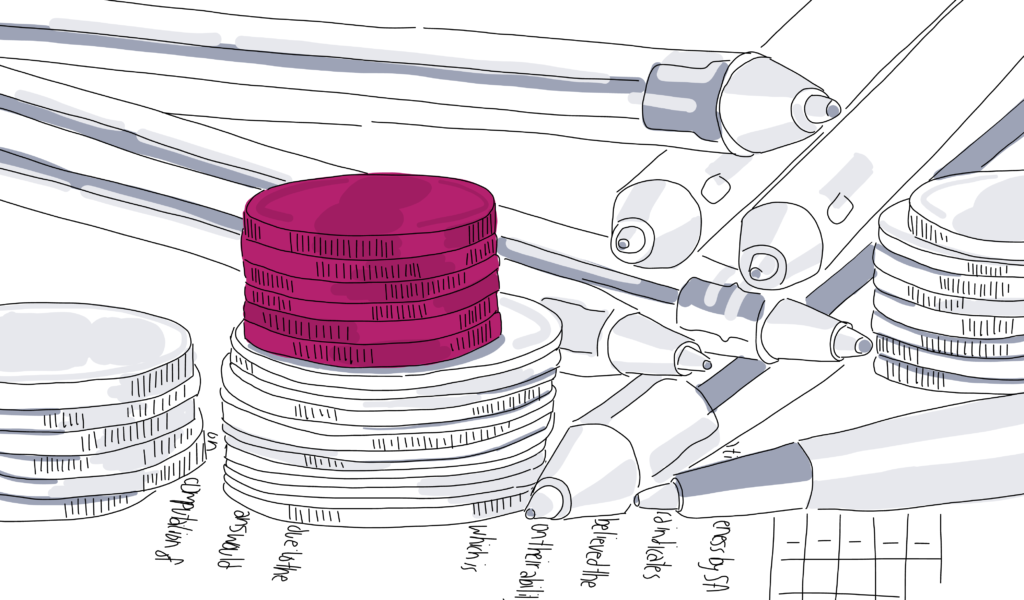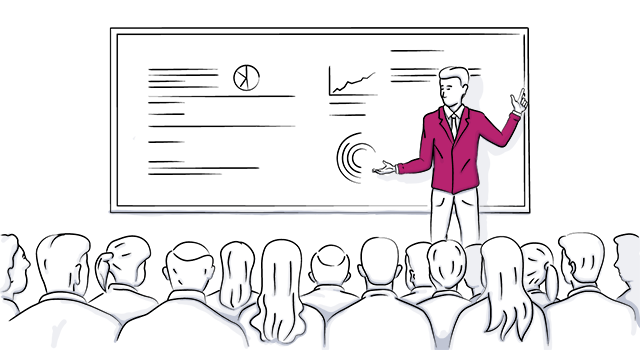
Do You Know the 3 Critical KPIs for Event ROI?
Was yesterday’s event successful? Let’s see: The vendors showed up on time. The event layout matched the design to a tee. Attendees mingled and talked with smiles on their faces.
These elements are all vitally important. But for fundraising and business events, more concrete outcomes make the difference. Winging it or hoping for the best doesn’t help achieve the results you want”for the event at hand or for future ones.
That’s why Key Performance Indicators (KPIs) can be an event planner’s best friend, and help prove out your event’s ROI.
KPIs are measurable, objective metrics for evaluating success. They are used all the time in business, so corporate clients may already be familiar with them and ready to use them in event planning.
Using the right information about an event’s successes and areas for improvement will help you:
- Make the event as successful as possible
- Improve year-over-year results
- Demonstrate that the client’s event budget (including the part that goes to you!) is well-spent
- Appeal strongly to sponsors

Explore the essential event KPIs to track for ROI
Event KPIs are tailored to the type of event, the event size and budget, the data available, and“above all else“the event goals. With KPIs, you want just the most important pieces of the puzzle”the key indicators of overall performance.
Popular event KPIs include:
- Ticket sales (leading up to the event)
- Attendance / Registration (day-of)
- Number of sales leads generated
- ROI (return on investment: whether the event made or lost money, and how much)
- NPS (Net Promoter Score: a measure of customer loyalty)
Read on to learn how to establish and use KPIs to steadily improve the event planning process. We’ve focused on the essential KPIs for three different events”a gala fundraiser, a software training event, and a new product launch for a food manufacturing company.
3 Steps to Create and Analyze Event Planning KPIs to Drive More ROI
Step 1: Define event goals and success IRL
When clients approach about an event, they usually have an idea of what they want to achieve, whether it’s brand awareness, sales leads, an employee morale boost, or fundraising. But they might not be clear on what success means exactly.
As a planner, you need to help them define success early in the process.
Let’s look at our three hypothetical events:
Non-profit gala fundraiser
A local art museum is planning a gala and auction to raise money, but they are vague about a number that defines success. You discuss ways to determine realistic outcomes: looking at their previous fundraising efforts, scrutinizing the donor list, and researching outcomes of galas for similar institutions.
The client decides they want to raise a total of $135,000: $115,000 from returning donors and $20,000 from new donors.
In addition, they want to come out ahead on the event”they want to make three times more from the event than they spend on it.
Employee software training
A mid-sized business would like to train all its employees in a new software system. During an early conversation, you realize they also want to connect employees from different departments during the event. The goal is now twofold: effective software training and team building.
How many employees should be there for it to meet the client’s benchmarks? How much time does the client hope will be devoted to lecture-style versus interactive training? Get specific.
Finally, what will constitute ˜team building’? It could be creating an ice-breaker zone where employees play board games to get to know each other. Or simply, ensuring people from different departments comprise breakout groups.
Granola company product launch
A local granola company wants to build brand awareness for their new granola bars among hikers and bikers. The company is hosting a trail cleanup day and live music event at a local mountain popular with their target group. During the event, pieces of the new bars will be handed out at sample tables.
In conversations with your client, you clarify that success means establishing positive recognition of the new product and improving customer loyalty.

2. Identify the KPIs that matter, and measure ˜em!
Non-profit gala fundraiser
This event has numbers-based goals, which lend themselves very easily to tracking. Good KPIs for this event include:
- Number of tickets sold to new and returning donors leading up to the event
- Money raised from new and returning donors
- The client’s return on investment, or ROI
ROI is a very popular KPI. Unlike a KPI, an ROI has the same formula every single time:
(net profit / investment) * 100.
If the clients want to make $135,000 while spending one-third of that amount ($45,000), their desired ROI will be ((135,000-45,000)/45,000)*100, or 200%.
Employee software training:
KPIs will include how many employees are at the training, the ratio of lecture-style to interactive training, and how many small-group interactions took place among employees who do not overlap on the org chart.
Methods for tracking include a quick exit survey asking employees to rank how valuable they found the event, and if they connected with coworkers in a positive way.
You might also suggest measures for the training outcomes: a number of help desk requests on the new software, or a brief employee survey about their comfort with the software.
Granola company product launch
ROI isn’t right for this case. In the strict near term, ROI for this event will be negative: the company is spending money to host an event AND providing product samples, all without hoping to make sales!
But that doesn’t mean experiential marketing has to be written off as a loss. On the contrary”this collection of survey data makes a really compelling argument for it. We just need KPIs that measure positive brand recognition and loyalty.
For positive brand recognition, we have the Net Promoter Score, or NPS. The NPS is the business equivalent of quantifying how many people feel yay, meh, and nope about a product or company. It’s a quick, 1-question survey that asks people, on a scale of 1-10, how likely they are to recommend a product or business to a friend.
Often, there is a follow-up Why? that invites people to elaborate. An NPS score can range from -100 to 100. A positive jump in NPS, say from 0 to +30, is what companies are looking for.
To measure loyalty, coupons or promo codes may come in handy. Provide event-specific ones. When they are used, the client will know that the customer is returning. The granola company would be happy if 25 percent of attendees went on to purchase the new bars in the month after the event.
You might also track social media indicators of brand loyalty: measures of engagement like Instagram shares, Facebook likes, retweets, etc.
3. Use the KPI data for better event results in the future
You’ve got it, don’t let it sit! Use that data to respond as you plan the event, or to guide your strategies for upcoming events.
Non-profit gala fundraiser
- If the donor list looks smaller than anticipated, see where you can scale back on spending to keep the desired ROI within reach. For future events, it will help to know what percentage of tickets (to both new and returning donors) are sold and when.
- If there’s a surge in event sales following a specific push on social media, email, or direct mail”make that channel your focus for the next event.
- Did a large percentage of previous donors skip the event? Get creative about ways to involve them in the next go ’round, whether it’s donating auction items or covering the cost of a gala ticket for underprivileged art lovers.
Employee software training
If fewer than the target number of employees attended the event, shift tactics for the next training. Perhaps you’ll begin scheduling the training earlier and send timely reminders.
If management prioritized other activities for employees, discuss the cost savings of group software training with executives to ensure buy-in from the top.
The survey data on teamwork and software training will suggest their own avenues of improvement: If teamwork and connections weren’t high, maybe it would be a good idea to get more creative with networking activities?
If software training results were dismal, find out whether it was due to the training itself or to logistical factors like excessive noise or a lack of breaks. Management will appreciate the data and suggestions.
Granola company product launch
This event requires the most creativity to effectively gather and analyze its KPIs. But it’s arguably the one that benefits most from clear KPIs since the bottom-line business benefits of the event”and your services”are not immediately obvious.
To measure whether the specific event helped the brand’s NPS score, give surveys both pre- and post-event. If the score doesn’t jump as anticipated, think about ways to improve brand recognition and positivity: bigger and better logo placement next time? Sample handouts of full-size bars in their regular packaging, not taster cups?
Whether the score jumps or plateaus, dig into any data from the follow-up question to find out what’s working and what’s not.
Social media is a heck of a multiplier for event marketing. If social media shows that your event reached a ton of people”including a bunch of people who weren’t even there”leverage that into sponsorships for the next event.
If social media buzz was disappointing, rethink your social strategy. Can you provide a quick, relevant hashtag and some good photo ops?
If 25 percent of the coupons are used, that is great. If not, and overall sales are low, maybe it’s time to look at other forms of marketing. If not, but sales are high, re-think your coupon strategy. Should it be by-the-box or by-the-bar?
Thanks for coming on this tour of KPI’s. Clients like to see results, and with KPIs, you can quantify those. They aren’t one-size-fits-all, and they may be unfamiliar territory for event planners, but when it comes to insight into outcomes, the right KPIs are invaluable.

Now you’re ready to deliver more event ROI with better KPIs!
Up next, need inspiration for planning a corporate event? Check out our Corporate Event Planning Tips. Or read these 6 killer secrets to event marketing!

